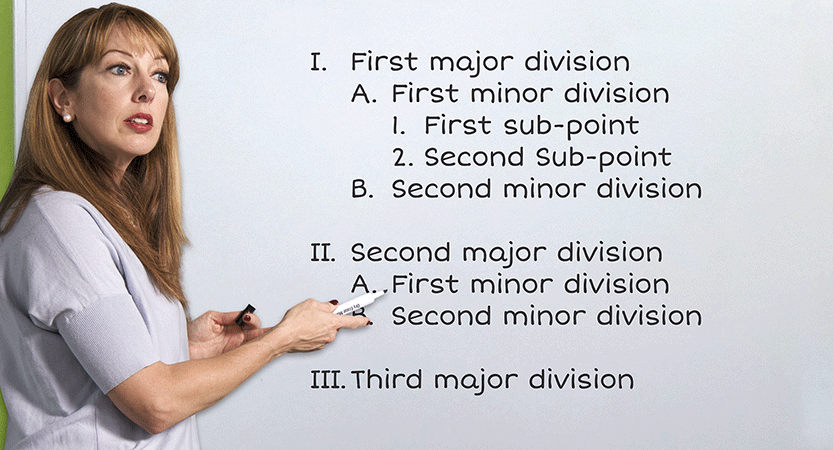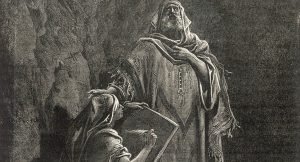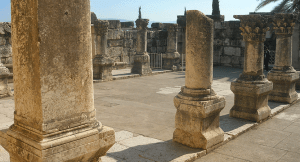In my last blog post, we concluded the observation stage of the inductive method with a look at the Samaritans. In this post we will begin the interpretation stage by outlining the structure of Luke 10.
“How is outlining interpretation?” you ask.
In essence, you are interpreting what you read, at least in the sense of the structure of the passage. You see things through different eyes. For that reason, your outline will undoubtedly vary from mine. However, because we are looking at fairly straightforward material, our outlines will have more points of similarity than disparities.
If your educational experience was like mine, you had a teacher guide you through the creation of an outline. I’ll assume that you understand the basics, simply using this post to explain how and why I have chosen to outline the chapter the way I have.
Outlining the Big Divisions First
First, I like to begin outlining with the big divisions. For me, it seems clear that the chapter has three major parts. The first is the section in which Christ sends 70 disciples out to the towns and villages He planned to visit soon. This section covers the first 24 verses.
Verse 25 introduces the next major section of the chapter with a “lawyer” asking what he needed to do to obtain eternal life. It is this question that sparks the exchange that results in Jesus telling the Parable of the Good Samaritan. This section concludes in verse 37 with Jesus telling the lawyer to do as the Samaritan in the parable had done – to love his neighbor.
The third and final major division is the shortest, covering verses 38-42. In it Christ has a brief conversation with Martha about her expectations that her sister Mary should help her serve the disciples rather than listen to Jesus. He tells her that He will not take from Mary the good “part” (verse 42) she had chosen. Our outline, then, starts like this:
I. The seventy sent to prepare the way for Christ’s teaching (verses 1-24)
II. The Parable of the Good Samaritan (verses 25-37)
III. Martha confronting Jesus about Mary (verses 38-42)
Working on the First Division
Now we can begin filling out these major divisions of our outline. I’ll spend less time and energy on the first and third sections because the parable is the focus of our attention, and because to do more would make this blog post too long.
What I want to do is essentially the same thing I did for the whole chapter, and that is look for the major divisions of this section. The account of the seventy has two clear partitions. First is the commission Christ gave the seventy. This part covers the first 16 verses, and includes the instructions and comments Jesus provided to His disciples in preparation for their mission.
He tells them not to take supplies with them, but to rely on the hospitality of the people of the towns and villages they visit. In this part, Jesus speaks of rejection He expects His disciples to face, and it is this part of His discourse that includes the condemnation of Chorazin, Bethsaida, and Capernaum.
The second part of this first section, which picks up in verse 17 and concludes with verse 24, deals with the return of the disciples and their misplaced joy in having power over demons. Christ teaches them that their joy should rather be based on their inclusion in the Kingdom.
The first part of our outline now looks like this:
I. The seventy sent to prepare the way for Christ’s teaching (verses 1-24)
A. Commission and instructions for the seventy (verses 1-16)
B. Discourse about the real source of joy (verses 17-24)
Outlining the Second Division
Now we can move on to outlining the chapter’s second major division, which contains the parable. This section contains three separate elements. The first is the exchange between the lawyer and Christ about what is necessary to obtain eternal life. This part begins in verse 25 and ends in verse 29.
The second part of the section is the parable itself (verses 30-35), which is actually Christ’s response to the lawyer’s final question. The third is the lawyer’s reluctant admission that the Samaritan acted the part of the true neighbor and Christ’s command that the lawyer follow that example (verses 36-37).
Because the parable is our focus, we’ll divide it into its three sub-points. The first tells us of the robbers accosting the traveler and leaving him half-dead (verse 30). The second describes the actions of a priest and a Levite as they encounter this unfortunate traveler (verses 31-32). The third sub-point describes the contrasting actions of the Samaritan (verses 33-35).
The second part of our outline now looks like this:
II. The telling of the Parable of the Good Samaritan (verses 25-37)
A. First exchange between the lawyer and Christ (verses 25-29)
B. The Parable of the Good Samaritan (verses 30-35)
1. The unfortunate traveler and the robbers (verse 30)
2. The priest and the Levite (verses 31-32)
3. The contrasting actions of the Samaritan (verses 33-35)
C. Final exchange between the lawyer and Christ (verses 36-37)
Examining the Last Major Division
We’re now ready to begin outlining the third and final major division of the chapter. This final section contains the account of Martha and her sister Mary. As I see it, there are three partitions in this story. First, we are told that Martha received Jesus into her house, and that her sister Mary “also sat at His feet” (verses 38-39). Next, Martha asks Christ to command Mary to help her serve (verse 40). Finally, we have Christ’s response that Mary has chosen what is good and that He will not take that from her (verses 41-42).
The third part of our outline now looks like this:
III. Martha confronting Jesus about Mary (verses 38-42)
A. Martha receives Jesus into her home (verses 38-39)
B. Martha asks Christ to command Mary to help her (verse 40)
C. Christ refuses, pointing out that Mary has chosen what is good (verses 41-42)
Finally, the Complete Outline
This completes our outline, as shown below:
I. The seventy sent to prepare the way for Christ’s teaching (verses 1-24)
A. Commission and instructions for the seventy (verses 1-16)
B. Discourse about the real source of joy (verses 17-24)
II. The telling of the Parable of the Good Samaritan (verses 25-37)
A. First exchange between the lawyer and Christ (verses 25-29)
B. The Parable of the Good Samaritan (verses 30-35)
1. The unfortunate traveler and the robbers (verse 30)
2. The priest and the Levite (verses 31-32)
3. The contrasting actions of the Samaritan (verses 33-35)
C. Final exchange between the lawyer and Christ (verses 36-37)
III. Martha confronting Jesus about Mary (verses 38-42)
A. Martha receives Jesus into her home (verses 38-39)
B. Martha asks Christ to command Mary to help her (verse 40)
C. Christ refuses, pointing out Mary has chosen what is good (verses 41-42)
Okay, you may be thinking that all this is available in commentaries, dictionaries, and encyclopedias. That may well be true, but consider this. Although looking at an outline that someone else has constructed can be helpful, that is a passive approach. Far better is outlining the passage yourself, which is an active exercise that forces you to take the time to evaluate what is actually happening in a passage. If you do, you’ll see more, you’ll understand more, and you’ll remember more!
Your Assignment for Next Time
In my next blog post we’ll interrupt our interpretation of the Parable of the Good Samaritan to consider an element we missed. In the meantime, take a few moments to meditate on the parable yourself, considering all that we’ve discussed so far. What is it that Christ is teaching the lawyer in this passage, and why?
Please do not begin to consider the relevance to your life today – that is for a later time. You must first work to understand what the passage meant to the original audience, and only then can you determine what it means for you today, which gets into Application, the third stage of the inductive method.




